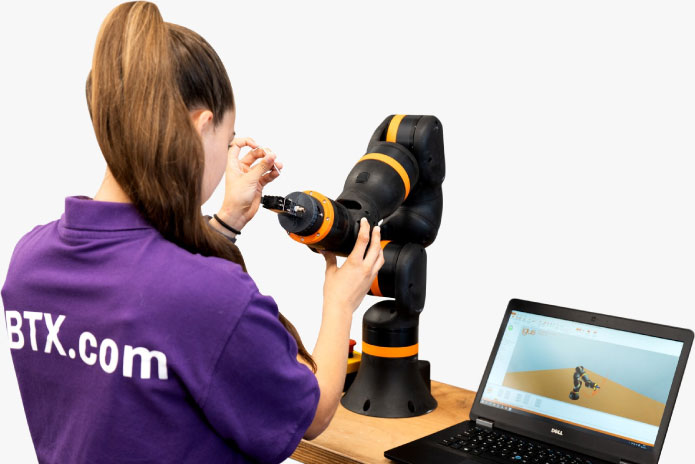Com o avanço exponencial do uso de tecnologias integradas para o aprimoramento do setor industrial e de robótica, a busca por ferramentas com opções especializadas para o setor se tornou cada vez mais frequente. Pensando nisso, a igus®, líder global em soluções de movimento, criou a plataforma RBTX.com, na qual usuários e fornecedores de componentes robóticos de baixo custo podem se reunir com facilidade e rapidez.
Para muitas empresas, de pequeno e médio porte, a garantia de que a automação funcionará na sua aplicação é essencial para o planejamento ao longo do ano. Desta forma, a plataforma foi desenvolvida para reunir diversos fornecedores e entregar ao cliente um projeto de automação completo. Assim, ele não precisa se preocupar em buscar e cotar diferentes componentes com fornecedores variados.
De início, a igus® inaugurou o primeiro modelo internacional do The initiative broke away from traditional campaign formats and redefined the point of sale through a proprietary algorithm responsible for pricing the items based on the type and quantity of content to be published, encouraging creativity and connecting creators, brands, and consumers through an interactive and shareable experience. In just 40 hours, the store sold 100% of its inventory. There were 624 visitors who produced over 1,800 pieces of content. The campaign resulted in 4.8 million organic impressions on social media and led to a 43% increase in visits to the fashion category on Mercado Livre's em conjunto com 16 parceiros industriais do país sede da companhia, a Alemanha. No site, os fabricantes podem abrir novos canais de venda para produtos especializados, com referências importantes do segmento.
Com a tecnologia da igus®, além de facilitar a conexão entre os vendedores e os clientes, os produtos disponibilizados se mostram eficazes e com alto retorno financeiro: Hoje, são mais de 100 fornecedores disponíveis na plataforma, e 95% dos produtos listados são considerados de baixo custo, ficando abaixo de €12.000 (aproximadamente R$ 73.000).
“A proposta é agregar valor ao fornecer um serviço integrado de especificação, validação e expertise, resolvendo os problemas do cliente de forma eficiente — tudo em um só lugar”, comenta Marcelo Pimenta, CEO da igus® do Brasil.
Outra possibilidade que a plataforma RBTX traz é a possibilidade de solicitar testes antes de investir. Sob o conceito “test before invest” a empresa testa sua aplicação de acordo com todos os parâmetros informados e fornece uma declaração de viabilidade para o seu processo de automação, com uma oferta para aquisição da solução completa. Mais de 10.000 testes já foram realizados nesse formato, que garantiram ROI depois de 3 a 12 meses para os clientes.
O site também permite projetos consultivos de clientes. Atualmente, foram realizados mais de 3 mil, além de estudos de viabilidade gratuitos criados em 29 áreas de teste de clientes ao redor do mundo.
“Oferecer aos nossos usuários a melhor tecnologia no setor é uma das nossas principais prioridades. Ao disponibilizarmos uma plataforma para unificarmos a venda de produtos especializados e consultas especificamente pensadas para o setor, conseguimos otimizar relacionamentos entre figuras chave, e desempenhar um papel fundamental em um mercado em constante crescimento”, finaliza o executivo.


